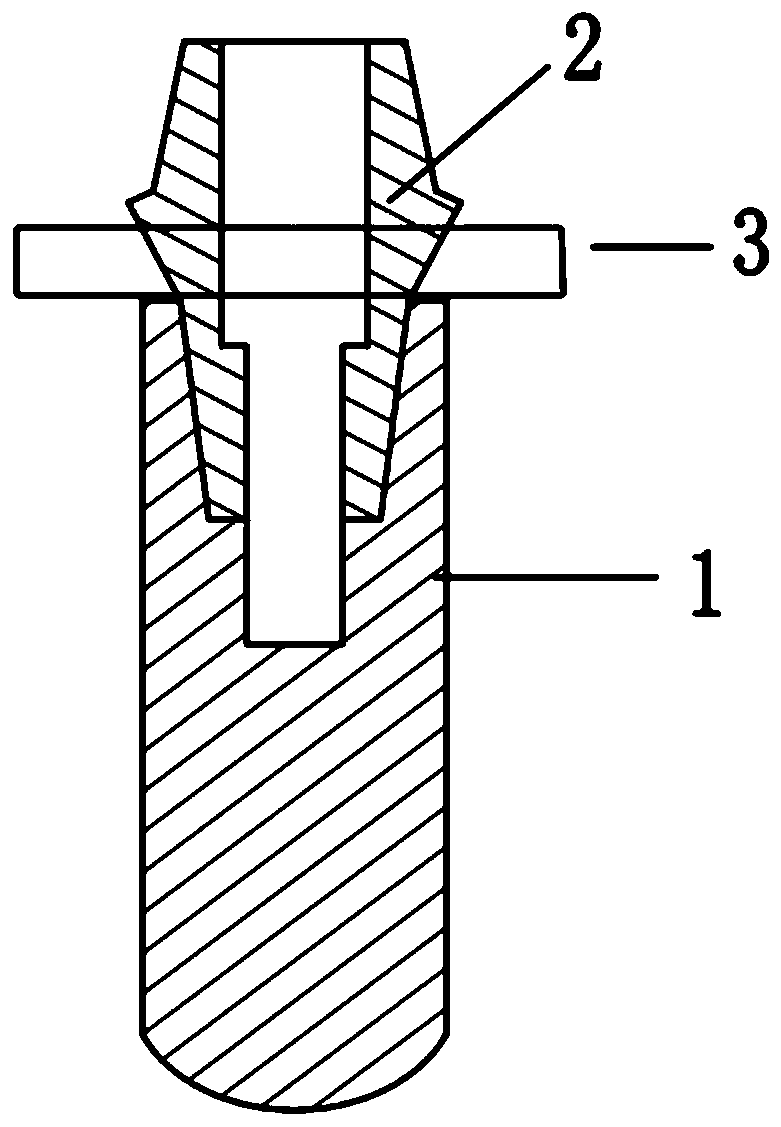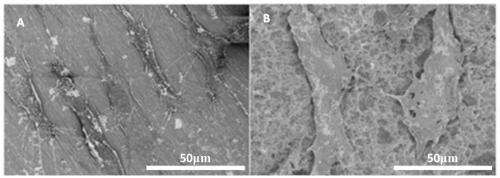Implant for improving sealing performance of soft tissue around implant
An implant and soft tissue technology, used in dental implants, medical science, dentistry, etc., can solve the problems of poor adhesion and unfavorable bacterial invasion, and achieve the effect of reducing mucositis, enhancing cell adhesion and good sealing.
- Summary
- Abstract
- Description
- Claims
- Application Information
AI Technical Summary
Problems solved by technology
Method used
Image
Examples
Embodiment Construction
[0018] Such as figure 1 Shown is the two-stage implant of the present invention, comprising a body 1 and an abutment 2, the surface of the abutment 2 located above the top of the body 1 is provided with a first microporous area 3, and the first microporous area 3 is provided with There are first micropores 31 uniformly arranged, and the size of the first micropores 31 is 1-3 microns, and there are smaller nanoscale second micropores 32 evenly distributed in the first micropores 31, and its structure is as follows: figure 2 shown. image 3 is the scanning electron microscope image of the part of the abutment through the gingiva, where A is the smooth surface, the fiber cells are arranged in parallel, when the first micropore area 3 is set, as image 3 As shown in B, the surface is dimpled, and fibrous cells adhere to grow vertically or angularly, indicating that the design of micro- and nano-scale micropores on the surface has no obvious effect on early cell proliferation, bu...
PUM
 Login to View More
Login to View More Abstract
Description
Claims
Application Information
 Login to View More
Login to View More - R&D
- Intellectual Property
- Life Sciences
- Materials
- Tech Scout
- Unparalleled Data Quality
- Higher Quality Content
- 60% Fewer Hallucinations
Browse by: Latest US Patents, China's latest patents, Technical Efficacy Thesaurus, Application Domain, Technology Topic, Popular Technical Reports.
© 2025 PatSnap. All rights reserved.Legal|Privacy policy|Modern Slavery Act Transparency Statement|Sitemap|About US| Contact US: help@patsnap.com



